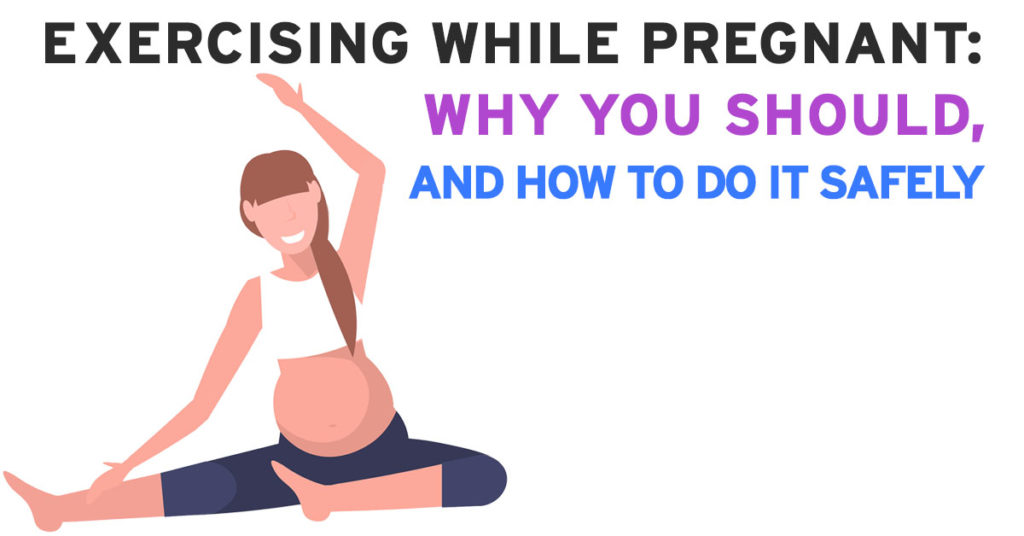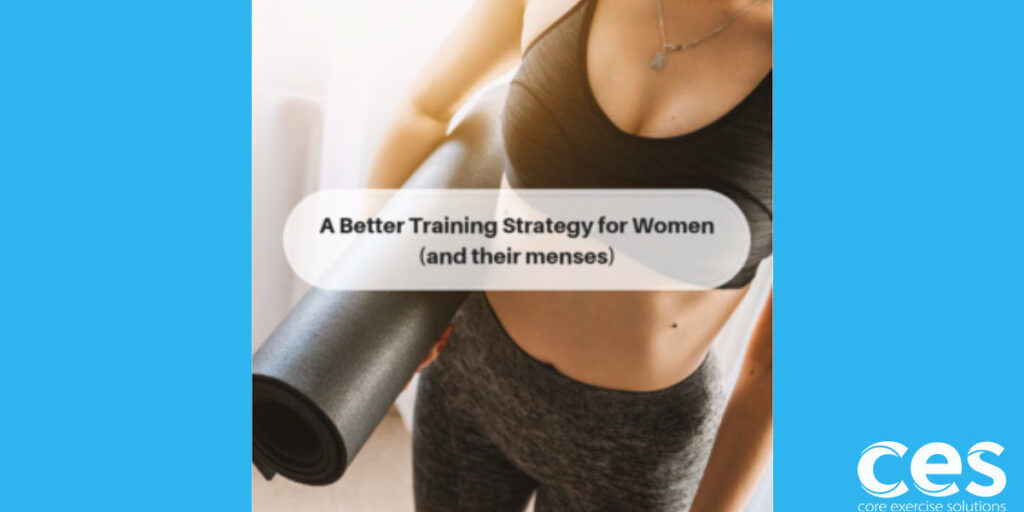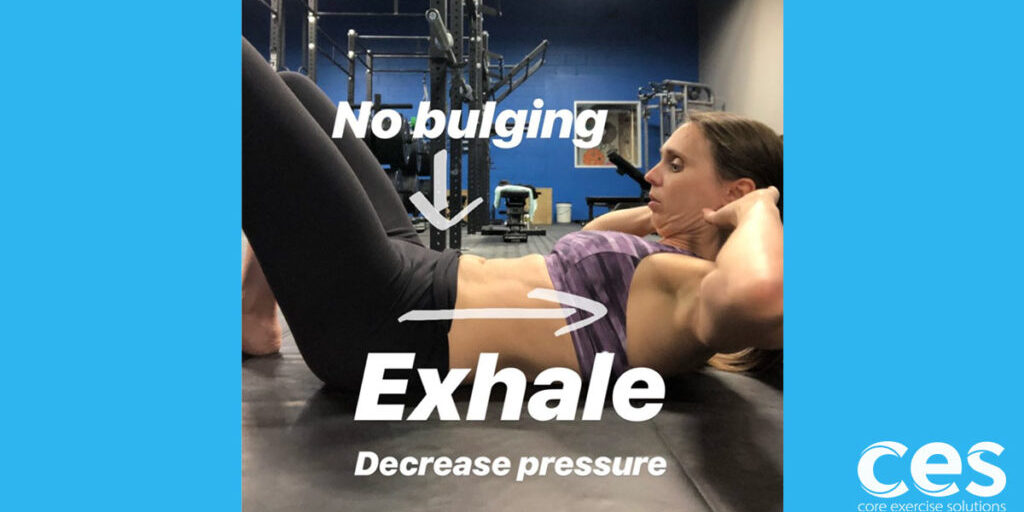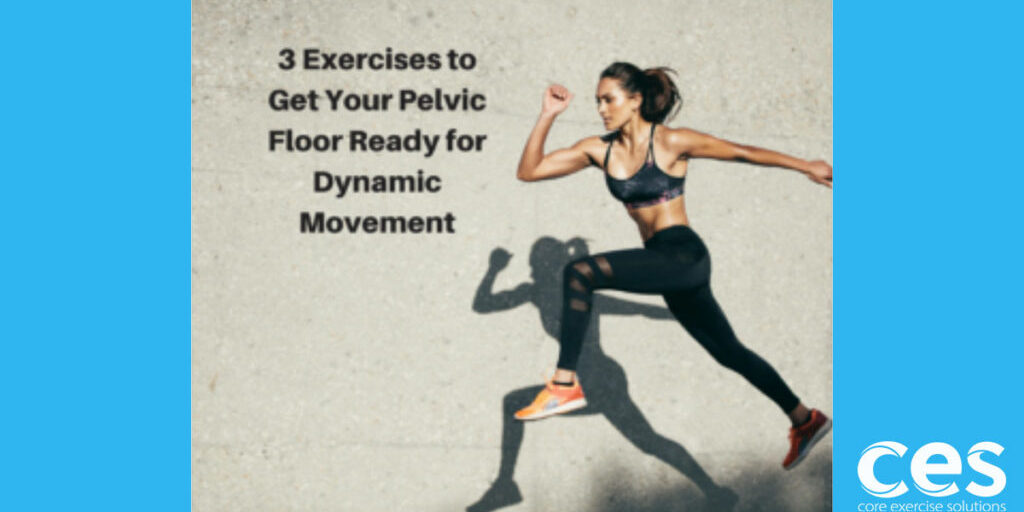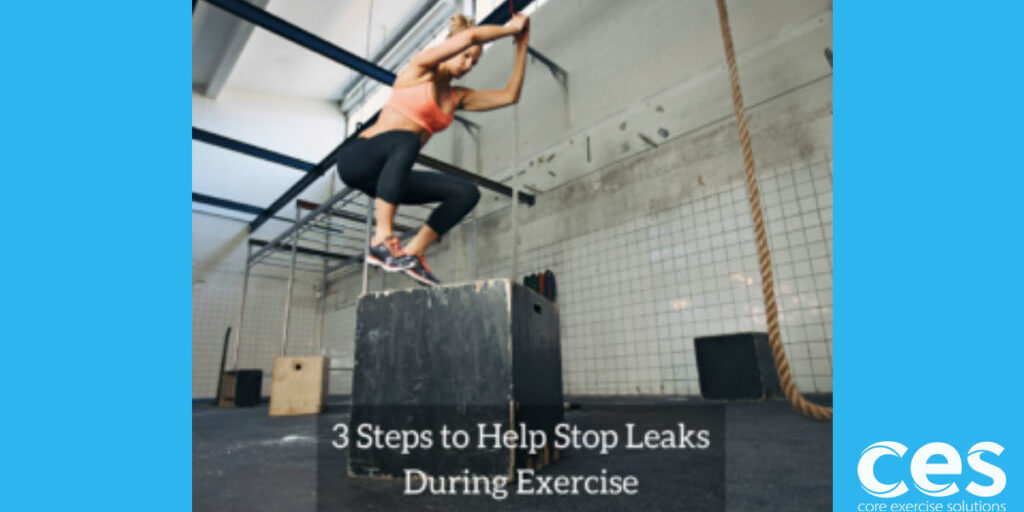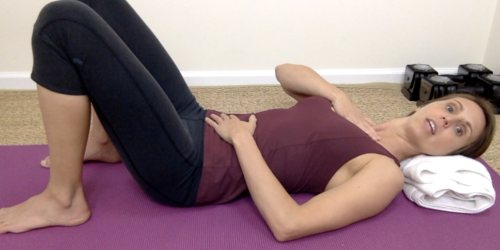There are exercises and strategies that can make pregnancy more comfortable, delivery a little easier, and postpartum recovery faster. Let’s dive into which exercises are recommended during pregnancy, exercises that can be harmful during pregnancy, and exercises that should be done with caution.
Pregnancy is amazing, exciting, and hard, all at once. Feeling those first kicks are perhaps the most wonderful thing I’ve ever felt – followed by a constant foot stuck up in my ribs being not the most wonderful thing ever. LOL. A little change can make a significant difference.
The biggest thing to keep in mind is that every pregnancy is different. Just because something worked well during one pregnancy doesn’t mean that form of exercise will be a good idea with subsequent pregnancies. So let’s go through what to look for and how to pick the best exercises that will be safe and effective throughout each pregnancy.
Keep your core and pelvic floor connected during pregnancy
Keeping your core and pelvic floor connected during pregnancy is a great idea for several reasons. Focusing on core connection and strengthening during pregnancy helps keep your abdominal muscles working, even with a growing belly. This can prevent back pain, SI joint pain and pubic symphysis pain as well as helping speed up core recovery postpartum.
It can be challenging to keep your core muscles engaged and working during pregnancy, but it is possible! One of the easiest ways is to contract your core a few times every day. This keeps the mind-muscle pathway connected as well as helping to maintain strength.
Contract your core for mind-muscle connection
Find a comfortable position (a recliner works well). Place your hands right above your pubic bone on the bottom of your belly. Inhale, fully relaxing, and then on the exhale contract your abdominal muscles by lifting your belly up and in. You should feel your pregnant belly move up and away from your public bone. The further along you are in your pregnancy, the harder this will feel.
Hold your abdominal muscles tight through the next inhale, directing your breath down into your back and sides, not up into the neck and shoulders.
On the following exhale, contract your abs up and in, lifting a little more. Then, on the following inhale, relax fully and completely so you’re not holding any tension in your abdominal muscles or pelvic floor. You are only holding the contraction through one and a half complete breath cycles.
If you have any tightness in your pelvic floor and abdominal muscles following this breath cycle, be sure to take a couple of complete breaths, fully relaxing all abdominal and pelvic floor muscles, before attempting to contract again.
This is a great exercise to do all the way up to delivery day since it’s low load and doesn’t put a strain on the midline of the abdominal wall.
Harmful exercises during pregnancy
Now, let’s talk a bit about contraindicated abdominal exercises during pregnancy. These are the exercises that do more harm than good, so it’s best to avoid them. The problem is that this list looks different for everyone, because we’re looking at HOW your body handles the exercise as the reason WHY the exercise becomes harmful – NOT the exercise itself. There is no such thing as a list of safe or unsafe exercises that fits every situation! So in order to determine what’s a safe and effective exercise for you and what is unsafe, you’ll want to learn how to assess the midline of your abdominal wall. This is when it’s great to work with a fitness or rehab expert who has been trained in what to look for to help monitor your pregnancy fitness routine and modify as needed.
If you’re trying to find someone educated in exercise modification near you to help, click here for a list of Pregnancy and Postpartum Corrective Exercise Specialists.
Avoid abdominal doming
Checking for doming (too much pressure in the midline of the abdominal wall) is an important step during pregnancy and the postpartum period. Too much pressure can make a diastasis recti worse.
It’s best to get into the habit of checking this during abdominal exercises like crunches, planks or push-ups, or when doing activities like trying to get off the couch or sitting up in bed.
When you start to notice any popping out of the midline, make the exercise easier or change your movement to prevent this from happening. The goal is to avoid any doming in the midline during pregnancy.
If you find yourself experiencing doming during daily activities, try these tips to help:
- Scoot to the edge of the couch, lean forward and move your feet underneath you as much as possible to get up instead of trying to get up from the back of the couch.
- Roll on your side to get out of bed.
- Change your core routine to include more indirect abdominal exercises when you notice any tenting or doming through the midline.
Should you be doing kegels during pregnancy?
This is a great start for your core during pregnancy — but what about the pelvic floor? Should you be doing kegels all pregnancy? Is that really the best solution to prepare the pelvic floor for delivery or prevent pelvic girdle pain (pubic symphysis and SI joint pain)?
Much like which core exercises are unsafe, whether or not someone should be doing kegels (pelvic floor contractions) will vary based on the needs of the person. If they are done correctly and in a way that is needed, pelvic floor strengthening and/or focusing on relaxing can help with pregnancy-related pelvic pain, as well as preparing the pelvic floor muscles for delivery and postpartum recovery. Some women will need to focus more on the contracting part and others on the relaxing part, all based on the tension and strength level of the pelvic floor muscles.
This is where exercise prescription can be a bit hard without an assessment, but let’s go through a simple exercise that may help during pregnancy.
Relax and contract your pelvic floor while doing core exercises
I love having pregnant women practice contracting and relaxing the pelvic floor as well when they do the core contraction exercise that we covered earlier. These are perfect to pair together.
A pelvic floor contraction, which includes a squeeze and lift, can be incorporated into the core contraction, holding the pelvic floor contraction while holding the abdominal contraction. Contracting the pelvic floor helps strengthen the abdominal muscle contraction, so that’s win-win.
Relaxing your pelvic floor is just as important as contracting it
Keep in mind that doing kegels has two parts. Contracting, and equally as important, completely relaxing. Contracting helps to make sure you maintain strength in the pelvic floor muscles, which is great for postpartum recovery. Relaxing helps to prepare the pelvic floor for delivery.
Making sure the pelvic floor muscles can fully relax is a very important step in birth preparation. This is a great reason to have a pelvic floor physical therapist on your birth prep team. When you go in for prenatal checks with your midwife or OB, they are checking to make sure you and the baby are healthy, but most are not checking for your ability to relax your pelvic floor muscles. Take this time after fully contracting the pelvic floor to then fully relax it.
If you find yourself slow to relax and having trouble getting the muscles to let go, spend more time on the relaxing part and less time on the contracting part. It will get easier over time with practice!
Why pelvic floor strength is important during pregnancy
Pelvic floor strength is needed to better handle the increasing ligament laxity that comes with the hormonal changes that are helping to spread the pelvis and prepare for delivery. These muscles work to support our organs and control sneeze pee and the release of gas. Working on pelvic floor strength during pregnancy can be very helpful for preventing pelvic floor issues postpartum. Just be sure it’s not all contract, contract, contract, and that equal attention is given to letting go.
How to decrease or prevent prolapse, hernias and diastasis recti
The most important information I’d like every pregnant woman to know is how to help decrease or prevent prolapse, hernias and diastasis recti. Keep in mind, you can do everything right and still end up with issues, but it sure is nice to know there is a chance these could be avoided or the outcome made less severe by simply applying a few precautions.
#1. Avoid movements that make you strain
Think about such things as lifting the heavy box from Costco into the trunk at an awkward angle, or sitting straight up in bed when you’re 9 months pregnant. Our strategies for how we create that oomph to make the movement can change to become harmful to the core and pelvic floor over the course of the pregnancy.
Women will often switch to bearing down on the pelvic floor, increasing prolapse risk, or putting pressure out on the midline, creating an umbilical hernia or worsening diastasis recti to make the oomph happen.
This is something to be especially mindful of as your body changes with pregnancy, and movements that were once easy become difficult. This is also why the advice to “keep doing what you’re doing” is so bad! The body changes and adapts with pregnancy, and so your exercise and movement strategies should change as well.
#2. Avoid straining of a different nature
Take a moment the next time you have a bowel movement to reflect on what it feels like to bear down or push. This is a good time to develop more pelvic floor awareness. Pregnancy often goes hand-in-hand with constipation. Bearing down while using the restroom is a major cause of pelvic organ prolapse, and NOT a healthy habit for the pelvic floor. This is such a great opportunity to practice relaxing the pelvic floor muscles! Elevating the feet on something like a squatty potty can help as well. Be sure to consult with your healthcare provider for other things that can help with constipation.





Eating blueberries during pregnancy always seemed to do the trick for me. 🙂 One other idea is to keep your glottis or throat open if you do need to push. Try saying a soft, opened throated “ha” sound vs closing your throat and building up pressure, making more of a grunting sound. Lots of air moving over the vocal cords is good, but limiting air by restricting the throat is not good. This limiting increases pressure.
Avoid any exercises that increase heaviness in the pelvic floor
It’s important during pregnancy and the postpartum time period to monitor and avoid any exercises that increase heaviness in the pelvic floor or cause doming out of the midline abdominals. The important thing to keep in mind is that these exercises will vary from person to person. One person’s safe or unsafe pregnancy and postpartum exercise list may not be safe or unsafe for you! Our bodies are unique and amazing, and deserve to be treated that way.
Pelvic Floor and Diastasis: What You Need to Know About Pressure Management
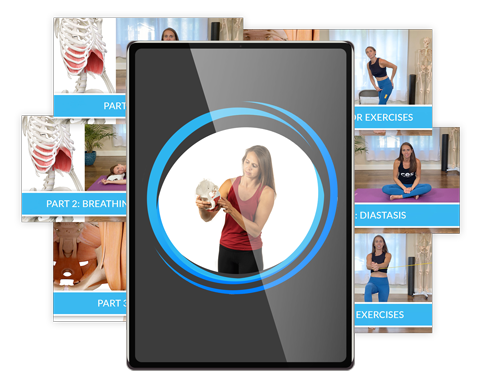
Join us today for this 6-part Pelvic Floor and Diastasis Video Series, absolutely free.
This course is designed for health/wellness professionals, but we encourage anyone interested in learning more about the pelvic floor and diastasis to sign up.
We don't spam or give your information to any third parties. View our Terms of Use and Privacy Policy.
Free Pelvic Floor Educational Series
Dr. Sarah Duvall, PT, DPT, CPT and the CES Team have helped thousands of women create the strength and stability needed to overcome common and not-so-common pelvic floor issues.
Join us today for this 4-part Pelvic Floor Video Series, absolutely free.
We don't spam or give your information to any third parties. View our Terms of Use and Privacy Policy.
Having trouble signing up? Click here


